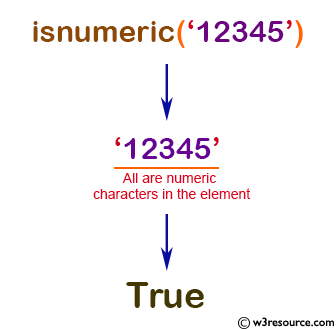

It’s important to point out that this argument is positional. The filename argument is the first input to the Numpy loadtxt.Īs mentioned above, this is the name of the input text file. Let’s look at each of these, one at a time. Here, let’s take a look at the inputs and optional parameters of Numpy loadtxt. The Parameters and Inputs of Numpy Loadtxt However, np.loadtxt has several optional parameters that enable you to fine-tune how the function works. In this simple case, the first (and only required) input to the function is the name of the text file from which you want to load your data.
#NUMPY CONVERT STRING TO LONG CODE#
In the simplest case, we can call Numpy loadtxt with the code np.loadtxt(). Going forward, I’m going to assume that you’ve imported Numpy like this, with the alias np. I’m reminding you of this, because (as I noted) this changes the syntax slightly. When we import Numpy like this, it enables us to call Numpy functions with the prefix np. This is the standard convention among Python users. When we use Numpy (or any other Python package), we need to import that package first.Īnd how we import a package will impact the exact syntax that we use.įor example, when we import Numpy, we almost always do it with this code:


We’ll look at the high-level syntax, and we’ll also look at some optional parameters that change how the function works. In this section of the tutorial, we’ll look at the syntax of Numpy loadtxt. That being the case, let’s take a look at the syntax of the function. So, for example, if you have row-and-column data that’s stored in a text file, where the numbers are separated by commas (a so-called csv file), you can use Numpy loadtxt to load the data into your Python environment.īut this is a fairly flexible tool that gives you a lot of fine-grained control over how you import your text data.Īnd how exactly you use it depends on the syntax. Numpy loadtxt enables you to load numeric data that’s stored in a text file. Load data stored in a text file with Numpy Loadtxt It’s one of the primary toolkits for doing data science and machine learning in Python.Īnd although it’s primarily used to wrangle and manipulate numeric data, before we do that data wrangling, we often need to get our numeric data from some source. This package has a variety of tools for creating, aggregating, reshaping, and manipulating numeric data. Numpy loadtxt is a function for the Numpy package.Īs you’re probably aware, Numpy is a package for the Python programming language that enables a programmer to work with Numeric data. If you need something specific, you can click on any of the following links.
#NUMPY CONVERT STRING TO LONG HOW TO#
The tutorial explains what the function does, explains the syntax, and shows step-by-step examples of how to use np.loadtxt. This tutorial will show you how to use Numpy loadtxt to load numeric data stored in a text file into a Numpy array.


 0 kommentar(er)
0 kommentar(er)
